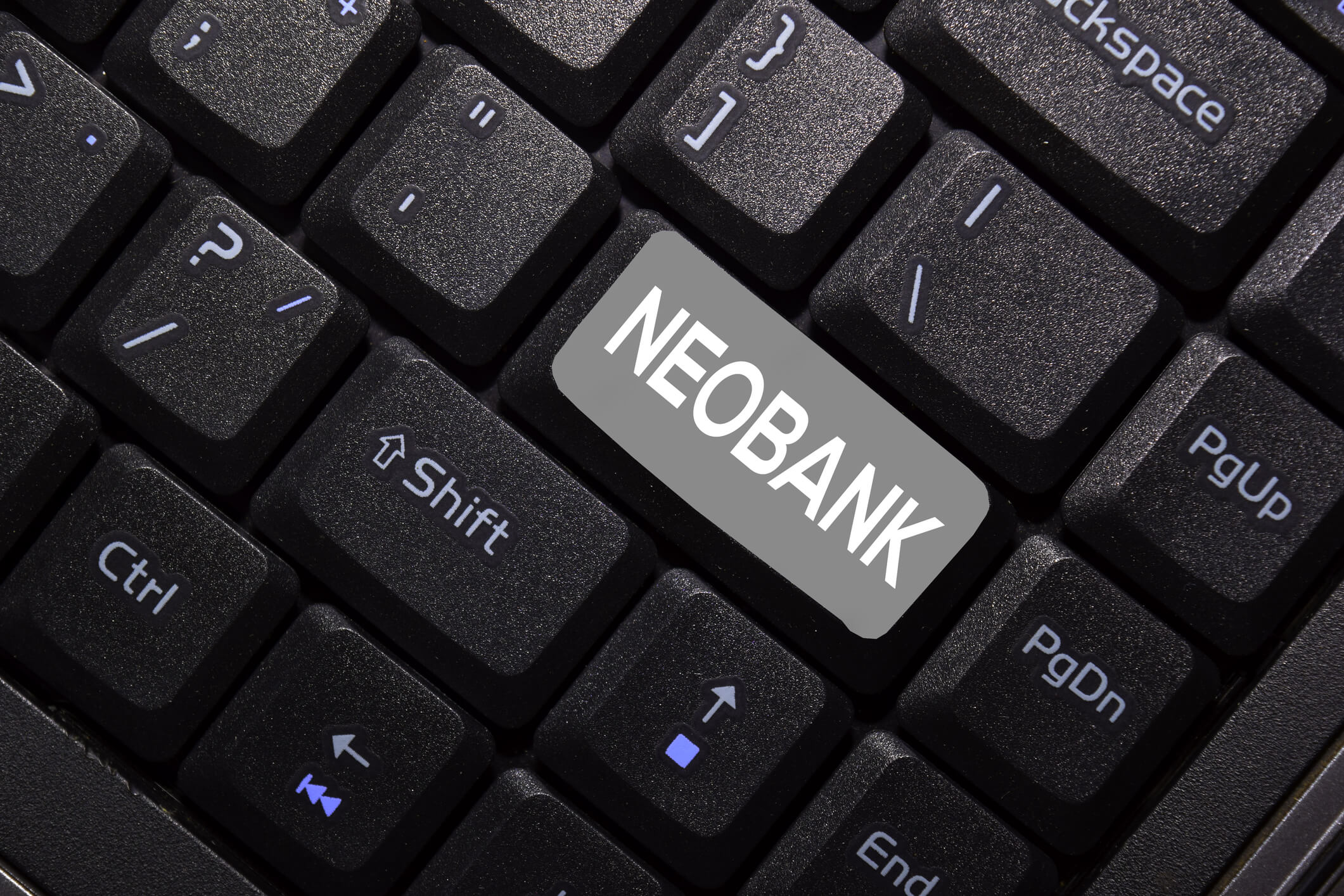What Is Neobanking And How Does It Work? A Detailed Guide
Neobanking is an innovative financial service paradigm that has gained significant traction in the financial world due to its technology-driven approach to banking. Unlike traditional banking institutions, neobanks operate entirely online and aim to streamline and enhance the banking experience for a digitally native generation.
The growth and popularity of neobanks have been remarkable in recent years. According to a report by Accenture, neobanks attracted over 146.42 million million customers globally in 2021, with a compound annual growth rate of 46% between 2015 and 2020. This rapid growth can be attributed to several factors, including the increasing adoption of smartphones, changing customer preferences, and dissatisfaction with traditional banking services.
What Is A Neobank?
Neobanking refers to a type of banking that is conducted solely over digital platforms, including smartphones and other internet-enabled devices, without any physical branches. This model focuses on delivering faster, more efficient, and often cheaper services than traditional banks. The backbone of neobanking is advanced technology such as artificial intelligence, machine learning, and big data analytics, which are used to personalize the user experience and improve operational efficiencies.
A neobank, also known as an online bank, internet-only bank, or digital bank, represents a type of direct bank that operates exclusively online without traditional physical branch networks. These banks are redefining the banking landscape by providing tech-savvy solutions and customer-centric services through web and mobile platforms. Here’s a closer look at neobanks and how they are shaping the future of banking.
How Neobanking Works
Neobanking represents a significant shift in the way financial services are delivered, characterized by a fully digital experience that eliminates the need for traditional physical bank branches. These digital-first entities leverage technology to streamline processes and offer innovative services to users who are increasingly comfortable managing their finances online. Here is an in-depth look at how neobanking works.
1. Technology Infrastructure
Neobanks use cloud-based platforms and rely heavily on technology for delivering their services. They utilize data encryption and security protocols to ensure the safety and privacy of customer data.
2. Account Setup
Setting up an account with a neobank typically involves downloading an app and completing a registration process that includes identity verification, often done through digital means like a photo of an ID card and a selfie.
3. Banking Services
Once the account is set up, users can access a variety of services such as money transfers, bill payments, and automatic savings plans. Many neobanks also offer innovative features like multi-currency accounts, cryptocurrency trading, and instant loan approvals.
4. Customer Support
Customer support is provided through digital channels. Neobanks often use chatbots powered by AI to handle queries and issues, supplemented by human support via chat or phone.
How Do Neobanks Make Money: Revenue Models and Strategies
While neobanks offer their services for free or at low costs to attract customers, they still need to generate revenue to sustain their operations and achieve profitability. Neobanks employ various revenue models and strategies to monetize their services. One common revenue stream for neobanks is transaction fees. They charge fees for services such as ATM withdrawals, international transfers, and overdrafts. Additionally, neobanks may earn interest income by investing customer deposits in low-risk assets.
Partnerships with other financial institutions and fintech companies are another way neobanks generate income. By collaborating with payment processors, lending platforms, and insurance providers, neobanks can earn referral fees or revenue sharing arrangements. For example, a neobank may partner with a lending platform and earn a commission for every loan originated through its platform.
Some neobanks also offer premium or subscription-based services to generate revenue. These services often include enhanced features, such as higher transaction limits, priority customer support, and access to exclusive perks. Customers who opt for these premium services pay a monthly or annual fee, providing a recurring revenue stream for neobanks.
Successful neobanks have demonstrated innovative revenue models and strategies. For instance, Revolut, one of the leading neobanks globally, offers a freemium model where customers can access basic banking services for free, but pay for additional features such as travel insurance or cryptocurrency trading. This approach allows neobanks to attract a large customer base while generating revenue from value-added services.
Popular Neobanks: A Look at the Market Leaders
The neobanking landscape is highly competitive, with several players vying for market share. Some of the leading neobanks globally include Revolut, N26, Monzo, Chime, and Varo.
These neobanks have gained significant traction and have millions of customers worldwide.
Revolut, founded in 2015, has emerged as one of the market leaders in the neobanking space. It offers a range of banking services, including multi-currency accounts, international money transfers, and cryptocurrency trading. As of 2021, Revolut has over 15 million customers and has raised over $900 million in funding.

N26, another prominent neobank, was founded in 2013 and has a strong presence in Europe. It offers a full suite of banking services, including checking accounts, savings accounts, and investment products. N26 has over 7 million customers globally and has raised over $800 million in funding.

Monzo, a UK-based neobank, has gained popularity for its user-friendly app and innovative features. It offers budgeting tools, real-time notifications, and a marketplace for third-party financial products. Monzo has over 5 million customers and has raised over $500 million in funding.

Chime, a neobank based in the United States, has disrupted the traditional banking industry with its fee-free banking services and early access to direct deposits. It has over 12 million customers and has raised over $1.5 billion in funding.
Varo, another US-based neobank, offers a range of banking services, including checking accounts, savings accounts, and personal loans. It has over 3 million customers and has raised over $400 million in funding.
Neobanks vs. Online Banks: Understanding the Differences
While neobanks and online banks both operate digitally, there are key differences between the two. Online banks are traditional banks that have a digital presence, allowing customers to access their services through online platforms. They often have physical branches and offer a wide range of banking services, similar to traditional brick-and-mortar banks.
Neobanks, on the other hand, are exclusively digital and do not have physical branches. They leverage technology to provide seamless and user-friendly banking experiences, often targeting tech-savvy customers. Neobanks typically offer a limited range of banking services, focusing on core offerings such as checking accounts and payments. They differentiate themselves through innovative features, personalized experiences, and integration with third-party applications.
One advantage of neobanks over online banks is their agility and responsiveness to customer needs. Neobanks can quickly adapt to changing market trends and customer preferences, as they do not have legacy systems or physical infrastructure to hinder innovation. They can introduce new features and services at a faster pace, providing a more tailored and modern banking experience.
However, neobanks may have limitations compared to online banks in terms of product offerings and regulatory compliance. Online banks, with their established infrastructure and broader range of services, may offer more comprehensive solutions for customers, including investment products, mortgages, and business banking. Additionally, online banks may have stronger relationships with regulatory authorities, ensuring compliance with banking regulations and providing a higher level of trust and security.
Types of Neobanks
Neobanks have emerged as a transformative force in the financial sector, offering a variety of digital banking services that cater to the evolving needs of consumers. As this sector expands, different types of neobanks have arisen, each with unique features and focus areas. Understanding these variations can help consumers choose the neobank that best suits their financial habits and needs. Here’s an overview of the different types of neobanks currently reshaping the banking landscape.
1. Consumer Neobanks
Consumer neobanks are perhaps the most common type. They target individual customers, offering personal banking services that are typically accessed through smartphone apps. These services include checking and savings accounts, loans, payment and money transfer services, and financial management tools. Consumer neobanks often emphasize user-friendly design, low fees, and innovative features such as instant notifications, budgeting aids, and savings goals to attract tech-savvy users looking for a more modern banking experience.
2. Business Neobanks
Business neobanks focus on providing digital banking solutions for small businesses, startups, and freelancers. These platforms cater to the unique needs of businesses, such as managing cash flow, handling payroll, and issuing invoices. They often integrate accounting and tax compliance features directly into their platforms, providing a one-stop-shop for business financial management. Business neobanks aim to simplify the banking process for companies and reduce the time and effort spent on financial administration.
3. B2B Neobanks
B2B (business-to-business) neobanks offer specialized services designed for the needs of other businesses, including banks and financial institutions. They provide tools and platforms that help these organizations improve their existing offerings or expand into new services. B2B neobanks might offer APIs (Application Programming Interfaces) for payments processing, banking infrastructure, card issuance, and more, helping traditional banks and fintech companies enhance their digital capabilities.
4. Hybrid Neobanks
Hybrid neobanks blend features of traditional banking with the innovative aspects of digital banking. They might be offshoots of existing banks that have created digital-first branches to cater to a more tech-savvy clientele. Hybrid neobanks offer the reliability and comprehensive service range of traditional banks, combined with the efficiency and user experience of neobanks. This model can be particularly appealing to customers who prefer a blend of old and new banking practices.
5. Niche Neobanks
Niche neobanks serve specific segments of the market or focus on particular financial products. For example, there are neobanks dedicated to serving millennials, gig workers, or immigrants who might face barriers with traditional banking. Others may focus exclusively on offering environmentally friendly banking solutions or supporting charitable causes. Niche neobanks use their specialized focus as a competitive advantage to cater to the unique needs and values of their target audiences.
Benefits of Neobanking: Why Customers Are Flocking to Digital Banks
Neobanks offer several advantages that have attracted a growing number of customers. One of the key benefits of neobanks is convenience. Customers can access their accounts and perform banking transactions anytime, anywhere, using their smartphones or computers. Neobanks eliminate the need to visit physical branches or wait in long queues, providing a seamless and time-saving banking experience.
Neobanks also offer enhanced accessibility compared to traditional banks. They often have lower or no minimum balance requirements, making banking services accessible to a wider range of customers, including those with limited financial resources. Neobanks also cater to the needs of millennials and digital natives, who prefer digital solutions and value convenience and flexibility.
Another advantage of neobanks is their innovative features and personalized experiences. Neobanks leverage technology to offer budgeting tools, spending analytics, and real-time notifications, empowering customers to manage their finances more effectively. They also integrate with third-party applications and services, allowing customers to access a wide range of financial products and services from a single platform.
Challenges Faced by Neobanks: Navigating the Competitive Landscape
While neobanks have experienced rapid growth and gained popularity, they face several challenges in establishing themselves in the competitive banking landscape. One of the key challenges is customer acquisition and retention. Traditional banks have well-established customer bases and brand recognition, making it difficult for neobanks to attract customers. Neobanks need to invest in marketing and customer acquisition strategies to build awareness and trust among potential customers.
Regulatory hurdles and compliance requirements are another challenge for neobanks. As financial institutions, neobanks are subject to banking regulations and must comply with anti-money laundering (AML) and KYC requirements. Meeting these regulatory obligations can be complex and costly, especially for neobanks operating in multiple jurisdictions. Neobanks need to invest in robust compliance systems and processes to ensure regulatory compliance and maintain customer trust.
Additionally, neobanks face competition from both traditional banks and other neobanks. Traditional banks are increasingly investing in digital transformation initiatives to offer online banking services and compete with neobanks. This competition can make it challenging for neobanks to differentiate themselves and attract customers. Neobanks also face competition from other neobanks, as the market becomes saturated with players offering similar services. To stand out in the crowded neobanking industry, neobanks need to continuously innovate and differentiate their offerings.
Neobanking Regulations and Security Measures: Ensuring Trust and Safety
Regulatory frameworks governing neobanks vary across countries, and neobanks must comply with the regulations of the jurisdictions in which they operate. In the United States, neobanks are subject to the regulations of the Office of the Comptroller of the Currency (OCC) and the Federal Deposit Insurance Corporation (FDIC). In Europe, neobanks must comply with the regulations of the European Banking Authority (EBA) and national regulatory authorities.
To ensure the security of customer data and transactions, neobanks implement robust security measures. These measures include encryption of customer data, two-factor authentication, and secure communication protocols. Neobanks also partner with established payment processors and technology providers to enhance security and compliance. For example, some neobanks use biometric authentication, such as fingerprint or facial recognition, to ensure secure access to customer accounts.
Partnerships and collaborations play a crucial role in enhancing security and compliance for neobanks. Neobanks often collaborate with fintech companies that specialize in security solutions or compliance technologies. These partnerships enable neobanks to leverage the expertise of these companies and ensure adherence to regulatory requirements.
The Future of Neobanking: Trends and Predictions
The future of neobanking looks promising, with several trends and predictions shaping the industry. One of the key trends is the emergence of open banking. Open banking refers to the sharing of customer data between financial institutions through secure application programming interfaces (APIs). Open banking enables neobanks to access customer data from traditional banks and offer personalized financial solutions. It also promotes competition and innovation in the banking industry, benefiting customers with a wider range of services and better experiences.
Artificial intelligence (AI) and machine learning (ML) are also expected to play a significant role in the future of neobanking. Neobanks can leverage AI and ML algorithms to analyze customer data, provide personalized recommendations, and automate processes. For example, AI-powered chatbots can handle customer inquiries and provide real-time support, enhancing customer experiences and reducing operational costs for neobanks.
The impact of neobanks on traditional banking and the financial ecosystem is expected to be significant. Neobanks are challenging the dominance of traditional banks by offering innovative and customer-centric solutions. Traditional banks are increasingly investing in digital transformation initiatives to compete with neobanks and retain their customer base. This competition is expected to drive further innovation and improve banking services for customers.
FAQs
Q.1: How do neobanks differ from traditional banks?
Answer: Neobanks do not have physical branches and operate solely online, making them more agile and often more responsive to customer needs compared to traditional banks that have a physical presence and older, legacy systems.
Q.2: Are neobanks safe to use?
Answer: Yes, neobanks implement robust security measures including data encryption, two-factor authentication, and secure communication protocols. They are also subject to regulatory oversight in the jurisdictions they operate, which mandates compliance with security standards.
Q.3: How do neobanks make money?
Answer: Neobanks typically earn revenue through transaction fees, interest on loans, partnerships with financial service providers, and premium or subscription-based services that offer enhanced features for a fee.
Q.4: Can I trust neobanks with my money?
Answer: Like traditional banks, many neobanks are regulated and must adhere to the same financial protection standards. However, it’s important to check whether a neobank is insured by relevant national schemes like the FDIC in the U.S. or the FSCS in the UK.
Q.5: What services do neobanks offer?
Answer: Neobanks offer a variety of services including checking and savings accounts, international money transfers, multi-currency accounts, budgeting tools, instant loan approvals, and more. Some also provide investment products and cryptocurrency trading.
Q.6: Who typically uses neobanks?
Answer: Neobanks are particularly popular among millennials and digital natives who are comfortable with using technology for financial management and prefer the convenience of digital banking.
Conclusion
Neobanking represents a significant evolution in the banking industry, driven by technological advancements and changing consumer expectations. These digital-first banks offer a range of benefits, including convenience, enhanced accessibility, and innovative features that cater to a tech-savvy clientele. While they pose challenges to traditional banks, they also push the industry towards more customer-centric solutions and technological innovation.
As neobanking continues to grow, it is likely to shape the future of the financial landscape by promoting more inclusive, efficient, and user-friendly banking experiences. However, potential users should carefully consider the features, security measures, and regulatory compliance of each neobank to choose the one that best fits their financial needs and habits. The ongoing developments in AI, machine learning, and open banking will further enhance the capabilities of neobanks, offering more personalized and integrated financial services to their customers.










